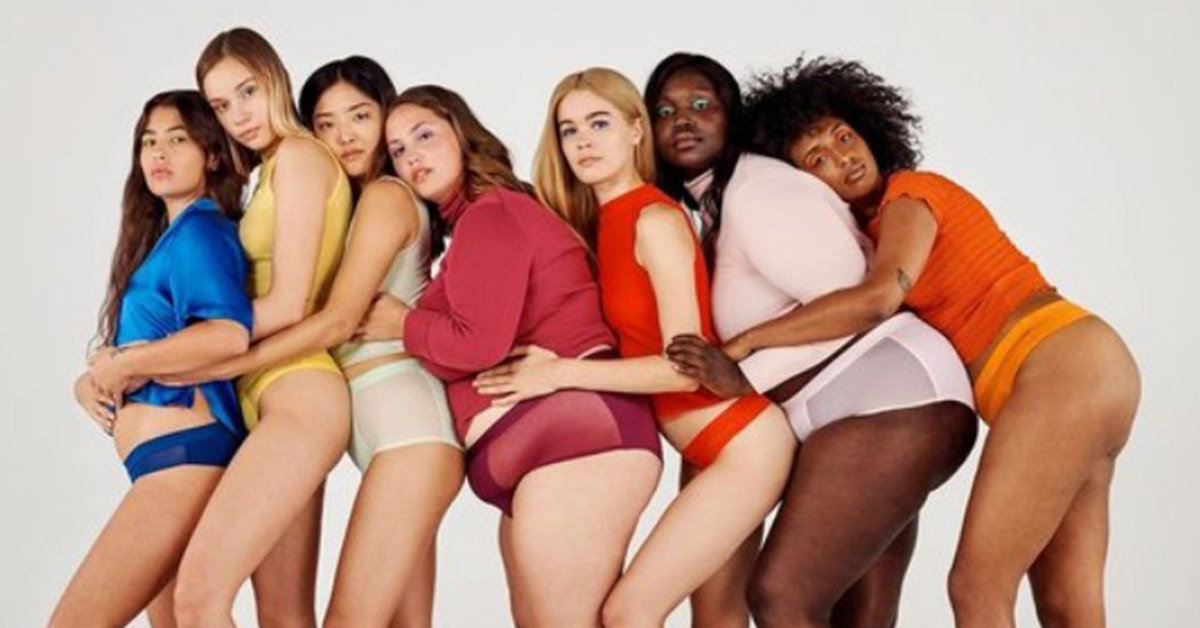
The parade of new underwear brands in the United States is attracting attention by successfully drawing public participation in the brand. Photo parade
Maria Williams, 21, who works in a beauty salon in New York, USA, took a picture while wearing orange underwear and posted it on her Instagram account. I have about 2000 followers. He said, “I felt depressed recently, and I felt satisfied with me by sharing a picture of my body.”
The underwear Williams wore is a new American brand called Parade. It wasn’t just a few months after its launch in October last year, but faced Corona 19, but rather, it is getting a hot topic on social network services (SNS) by changing the perception of a beautiful body, according to the New York Times (NYT) of the United States. The parade sold more than 700,000 sets last year, generating 10 million dollars (about 10.9 billion won) in sales.
Voluntary marketing participation of the general public, not famous models

One in eight parade customers posted a photo of wearing parade underwear on social media. Photo parade
In March of last year, the parade launched a campaign aimed at “Let’s love her body more,” saying that women don’t have to be skinny like models or have a perfect body. We will send underwear for free, not to famous celebrities or influencers, but to ordinary people with hundreds or thousands of followers at best, so if you like them, you can upload photos and ask for feedback if you do not like them. The reaction was hot. At once, more than 6,000 applicants flocked. According to the parade, one in eight customers posted photos of wearing parade products on social media.
Business Insider, an American economic magazine, said, “The parade made ordinary women of various occupations, such as college students, office workers, and chefs, reveal their bodies.” It was expanded to the (body positive·self-body positivism) campaign.”
Facebook “No Selective Post”

The parade selected transgender as well as various races as product models. In addition, it produces sizes not found in other brands, from XS to 3XL. Photo parade
Body positive is an exercise to affirm one’s body by getting away from the past view that a slim body is beautiful. It is also an exercise to equally respect all bodies regardless of their physical ability, size, gender, race, or appearance. Among body positive activists, there are cases of posting photos that expose a significant portion of the body, but Facebook and Instagram have stated that they do not view these as sensational posts.
Kami Teyes, who dropped out of college and co-founded the parade, said, “I wanted to have a positive cultural influence on young women.” “We wanted to create a new concept of underwear, out of the customs that most companies in the past limited the definition of femininity.” said.
“Capture MZ generation in the fierce underwear market”

Marketing experts analyzed that because consumers know that posts by famous influencers are just advertisements, they can no longer have a positive effect. Photo parade
NYT said, “The US underwear market is already Red Ocean, and the parade has focused people’s attention with one Instagram campaign.” “Now, marketing in the way of paying money and collaborating with famous influencers is not very well received.” Analyzed.
Experts rated the parade customers as having high brand loyalty. Stephen Hinshaw, a professor of consumer psychology at New York University, said, “Unlike the baby boomers generation, MZ generation (millennials + generation Z) wants to be a part of something. We gathered customers while helping us to do good things.”

In the early 2000s, Victoria’s Secret, the No. 1 brand in the US underwear market, has been criticized for emphasizing a distorted body and is being ignored by consumers. Photo victoria’s secret
On the other hand, Victoria’s Secret, an underwear brand that produced numerous global models under the nickname’Angel’, is rapidly falling. This is because social criticism followed, saying that it emphasized the distorted female body. According to market research firm Coresite Research, Victoria’s Secret’s U.S. market share fell from 31.7% in 2013 to 24% in 2018. The share price of the parent company L Brands has been cut in half over the past five years.
Vivviv, underwear for me, not for others’ eyes

Domestic underwear brand VivVive chose models of various body types that are common around us rather than perfect bodies such as mannequins. Photo vivviv
A similar atmosphere is being formed in the domestic underwear market. Launched in 2018, VivVive features models with a variety of natural and thin body types that are dry or chubby. It also does not correct stretch marks, folds, and protruding flesh that occurs when wearing underwear. It focuses solely on resolving grievances related to the woman’s body such as hygiene and menstruation and ensuring activity.
Director Lee Sang-bin of ViveVive said, “We chose models of various body types that are common around us rather than a perfect body like a mannequin.” “It is not underwear that looks pretty to other people, but 100 to the comfort of a woman who is a real wearer. % Focus.”
Reporter Bae Jeong-won [email protected]
